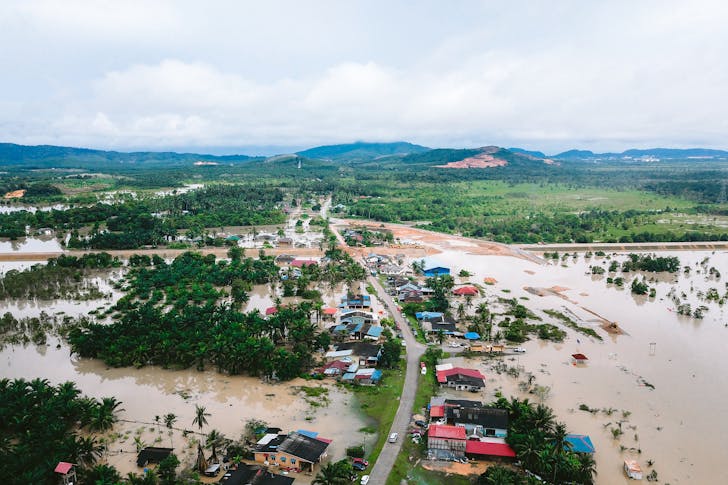
How Resilience Investments Can Revolutionize Climate Adaptation Funding

Resilience investments are crucial for climate adaptation, particularly in vulnerable agriculture, water, and energy sectors. More than $200 billion is required annually to meet rising demands, but only a fraction of this capital flows into adaptation. Public budgets contribute 98% of this funding, leaving private capital as a largely untapped resource. Mobilizing private sector investments could revolutionize climate adaptation, especially for developing regions.
Why Resilience Investments Matter
As climate-related risks intensify, resilience investments offer both financial and social benefits. By funding projects that mitigate the impact of climate disruptions, private investors can improve supply chain stability, reduce operational costs, and boost credit ratings. These factors lead to greater profitability and access to lower-cost capital. Moreover, responsible investing aligns with growing trends in environmental, social, and governance (ESG) criteria, appealing to stakeholders focused on long-term sustainability.

Pok Rie | Pexels | As climate-related risks intensify, resilience investments offer financial and social benefits.
The Role of Measurement and Valuation
For resilience investments to scale, stakeholders need accurate measurement and valuation frameworks. Unlike carbon credits, resilience lacks a straightforward monetization strategy, making it challenging to align market forces with resilience goals. Initiatives like the “Resilience Monetization and Credit Initiative,” introduced by the Egyptian Ministry of International Cooperation and partners, aim to standardize valuation methods. This framework will enable investors, governments, and communities to better understand resilience projects’ social and economic returns.
Diverse Valuation Approaches
Valuing resilience investments involves addressing the differing perspectives of various stakeholders. Farmers, for example, might prioritize crop security and income stability, while lenders value lower default risks. Therefore, creating a standardized market value for resilience is challenging. Resilience investments in agriculture can help farmers withstand natural disasters and market volatility. However, these investments also need affordable financing options and measurable returns to incentivize small-holder farmers.
Local financial institutions also face challenges. Lending to vulnerable borrowers like small-holder farmers is often high-risk. Financial institutions may require risk mitigation tools to encourage loans, such as interest rate adjustments based on resilience impacts. As farmers gain resilience, their risk of default decreases, making them more attractive borrowers and supporting a cycle of sustainable lending.
Developing a Resilience Credit Market
A resilience credit market could mobilize capital by quantifying resilience investments’ financial and social benefits. A tradable resilience credit would assign value to projects that enhance climate adaptability, similar to how carbon credits operate. However, relying solely on market forces might inhibit growth due to externalities and information gaps. To counter these challenges, additional incentives like price floors or portfolio subsidies could stabilize the market, encouraging more investors to participate.
For example, the value derived from resilience investments could include both financial gains, like improved bank credit ratings, and social returns, such as enhanced public health outcomes. Together, these benefits create a comprehensive view of the value resilience brings to communities and the economy.
Sector-Specific Impacts and Opportunities
In agriculture, resilience investments help farmers adapt to climate stressors, from droughts to fluctuating prices. Financial tools that lower barriers to investment—like low-interest loans and crop insurance—support small-holder farmers in adopting resilience measures. Banks could also play a role by evaluating farmers’ creditworthiness based on their resilience efforts, linking credit scores to adaptive practices.
In the energy and water sectors, resilience investments support essential infrastructure upgrades that prevent outages and improve efficiency. Investments in these areas can reduce costs associated with climate disruptions, benefiting both consumers and providers. By implementing smart grid technologies or water conservation systems, utilities can enhance resilience and reduce operational expenses, improving profitability in the face of climate change.

Mark Stebnicki | Pexels | Resilience investments help farmers adapt to climate stressors like droughts and price fluctuations.
Future Directions in Resilience Investment
To make resilience investments a viable asset class, stakeholders need reliable data on expected returns. Scenario modeling can provide insights into the potential outcomes of resilience projects, helping investors weigh risks and benefits. In 2024, pilot programs will introduce measurement tools to establish the groundwork for resilience credits. This effort is expected to double available capital for climate adaptation by attracting private investment and aligning it with public funding.
As climate impacts grow, so does the urgency to adopt adaptive practices. Investors, governments, and development organizations recognize the need for climate resilience, emphasizing the role of innovative financial models. By measuring and monetizing resilience benefits, these stakeholders can accelerate funding and address climate vulnerabilities in at-risk communities, paving the way for a more climate-proof global economy.
More in Investments & Savings
-
`
Sophie Turner Shares Her Daily Struggles as a Single Mother
Sophie Turner recently opened up about her immense challenges as a single mother. The 28-year-old British actress, known for her iconic...
October 12, 2024 -
`
How to Align ESG Goals With Your Business Strategy
In today’s corporate landscape, aligning a corporate foundation’s ESG goals with the core strategies of a business has become increasingly crucial....
October 3, 2024 -
`
Vale Ventures to Invest in Mantle, A Startup for Carbon Capturing
In a bold move towards a greener future, Vale Ventures has made headlines by announcing an investment in the Boston-based startup...
September 25, 2024 -
`
Is Selena Gomez a Billionaire?
Recently, rumors of Selena Gomez’s billionaire status, fueled by her ever-expanding business ventures and skyrocketing influence, have gained traction. Gomez, who first...
September 18, 2024 -
`
New ‘Medicare Card’ Scam Is On the Rise – Here’s What You Should Do
Have you recently received a call asking you to verify your Medicare number to get a new card? If so, be...
September 13, 2024 -
`
What Is a Stock Split? Understanding How It Works
Stock splits are a fascinating aspect of the financial world that often pique investors’ curiosity. When a company announces a stock...
September 6, 2024 -
`
Cardi B No Makeup: Proof That She’s a Natural Beauty Queen
Cardi B is known for her bold and extravagant style, often capturing attention with her vibrant fashion choices and daring beauty...
August 31, 2024 -
`
How Long Has Forbes Been in Business? – And What Lies Ahead
For over a century, Forbes has been a pillar of business journalism and financial reporting. Since its inception in 1917, Forbes...
August 21, 2024 -
`
Are House Prices Going Down in Orange County in 2024?
In June 2024, Orange County saw a notable shift in its real estate landscape. This leads many to wonder if house...
August 14, 2024















You must be logged in to post a comment Login